Among the coastal shrubs and wild chaparral that call the mountainous coast of California and Oregon home, the pendulous catkins of coast silktassel
(Garrya elliptica) are a prize. While most plants sleep through winter, coast silktassel comes to life with a cascade of floral tassels.
Discovered by noted botanist David Douglas, coast silktassel has been popular in the California garden since the mid-19th century. And while it's a California native that thrives along the Pacific Coast, its ornamental value prevails in gardens across the Atlantic — Britain's Royal Horticultural Society even bestowed its Award of Garden Merit (AGM) on the shrub.
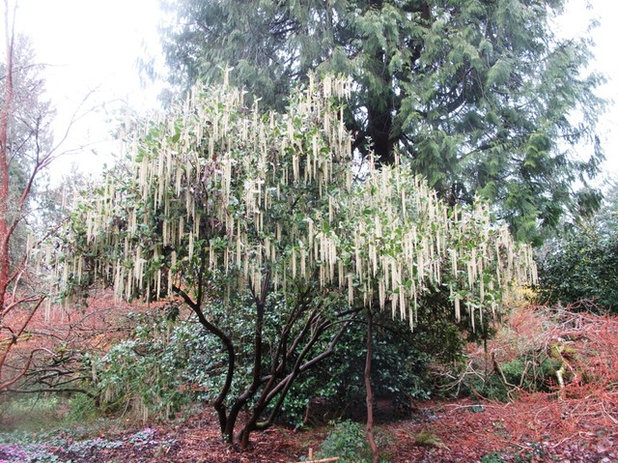
Debra Prinzing
Botanical name: Garrya elliptica Common names: Coast silktassel, silk tassel bush, quinine bush, wavyleaf silktassel
Origin: Native to coastal ranges of California and southern Oregon
USDA zone: 8; hardy to 10 degrees Fahrenheit (find your zone)
Water requirement: Moderate to light
Light requirement: Full sun to light shade in hotter climates
Mature size: 10 to 20 feet tall and wide
Benefits and tolerances: Fairly drought tolerant; rabbits and deer usually ignore it; the fruit attracts birds; the flowers attract bees; tolerates urban and coastal conditions
Seasonal interest: Evergreen; flowers in winter
When to plant: Plant seedlings in late spring or early summer, after the last frost. Does not tolerate root disturbance.
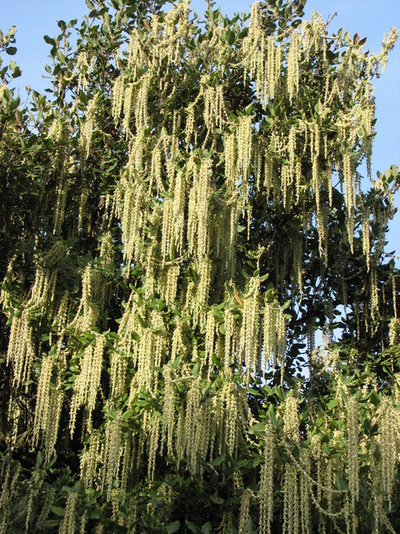
Peter L Edwards
Distinguishing traits. Coast silktassel’s leathery green foliage recedes to garden backgrounds for most of the year.
Its showy winter catkins are what give this plant its name and set it apart from its garden neighbors — particularly when most of them are dormant.
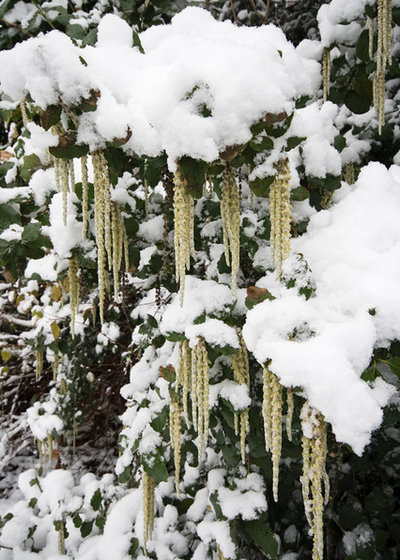
smir_001catchingup
From early winter through early spring, pendulous male catkins suspend up to 12 inches below silktassel’s branches. These flowers draw bees into the garden. Silktassel is dioecious, with male and female flowers occurring on different plants. If you want female berries for wildlife snacks, a male species must be present. Male shrubs produce the showy winter inflorescence either way.
Silktassel is a dense, upright shrub, but its branches can also be trained as a tree. Popular cultivars include 'James Roof', with longer catkins, and the more compact 'Evie'.
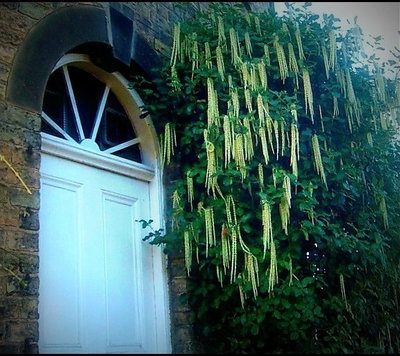
Janet Ulliott
How to use it. Coast silktassel is a showy bloomer in winter but an inconspicuous native throughout the rest of the year. Its dense foliage makes it a great windbreak, or it can even be grown to mask an unattractive wall. As a California native, it can be a feature in a coastal woodland garden.
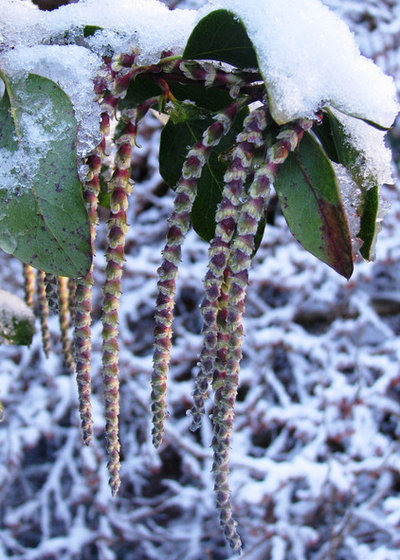
ESEartstudio
Planting notes. In tune with the coastal California climate, coast silktassel prefers mild temperatures, though it is cold hardy to 10 degrees Fahrenheit. It tolerates fog, full coastal sun, wind and rain, and is relatively drought tolerant.
Be sure to water it well when it's young to establish deep roots, as this is a long-lived plant. Provide medium soil with good drainage — too rich and it won’t flower. After it flowers you can prune the branch tips to maintain a clean form.





